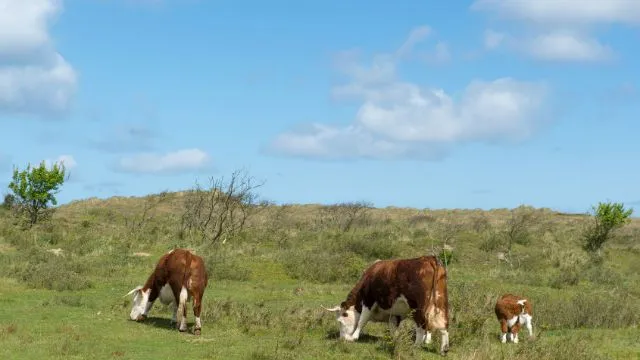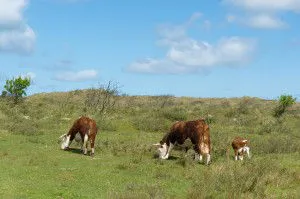
- Share on Facebook113
- Share on Pinterest
- Share on Twitter
Earlier this month, Texas health officials and the CDC announced the death of a man caused by Creutzfeldt-Jakob disease (CJD), a form of mad cow disease. Officials assure us that this man more than likely picked up the disease outside of the country, however, for many people it still raises alarms.
While the USDA has measures in place to prevent mad cow disease, the safest option available when it comes to beef is organic grass fed.
Mad cow disease, also known as Bovine Spongiform Encephalopathy (BSE), is a degenerative, fatal disease that affects the nervous system of cows. Certain other animals, such as sheep and deer, have their own versions of this type of disease.
Eating the brain, lymph nodes, eyes or spinal tissue of infected animals (where the disease-causing prions gather) has been linked to a variant of CJD in humans. Humans can sometimes carry the CJD infection for years, even decades, before symptoms appear.
Both BSE and CJD are very rare, however, there have been four cases recorded in the United States. The Texas man who recently passed away from CJD is thought to have eaten beef products overseas, as he had a history of international travel. The CDC asserts that all of the four cases in the US initially began overseas, however, this has not been conclusively proven.
It is important to note that the USDA does have procedures and surveillance programs in place to protect against the spread of mad cow disease. The brain tissue of approximately 40,000 slaughtered cows per year is tested, and there are measures to remove the brain and spinal cord from cattle before processing. The Texas Department of State Health Services says that they are investigating the current case to determine how the man was infected.
While conventionally-raised meat operations do screen for mad cow disease, sometimes animals are fed meat by-products, which presents a danger. In the 1980s, a BSE outbreak in Britain was traced back to sheep byproducts, which included bone meal, that were fed to cattle.
Today, conventionally-raised cattle are processed so quickly that there could be brain and spinal tissue that slips by the inspection and ends up in ground beef (especially made from beef trimmings), sausage or animal feed.
Mad cow disease, and CJD, are very rare, so it’s not something to worry excessively about. However, to both minimize your risk, support an industry that is not cruel to animals and enjoy greater health benefits, choose local, organic, grass fed (or pastured) beef.
Grass fed, pastured animals are allowed to eat their natural diet of grasses, have room to move around, are not fed antibiotics or growth hormones, and are not fed animal by-products. To date, there has not been any incidents of mad cow disease reported in grass fed beef.
Furthermore, grass fed beef has been found to be more nutritious than its conventionally-raised counterpart. It contains three times the omega-3 fatty acids, which are linked to cardiovascular and cognitive wellness, as well as more beta carotene and vitamin E. Grass fed beef has also been found to be significantly higher in conjugated linoleic acid (CLA), which has been associated with a reduced risk of heart disease and cancers.
 Your best bet when it comes to beef is to find a local farmer who follows organic practices, lets his or her cattle roam on a pasture and follows stringent processing methods. By developing a relationship with such a farmer, you can rest easy knowing your meat is as nutritious – and safe – as possible.
Your best bet when it comes to beef is to find a local farmer who follows organic practices, lets his or her cattle roam on a pasture and follows stringent processing methods. By developing a relationship with such a farmer, you can rest easy knowing your meat is as nutritious – and safe – as possible.
-The Alternative Daily
Sources:
http://www.cbsnews.com/news/mad-cow-disease-blamed-for-patients-death-in-texas
http://www.ninds.nih.gov/disorders/cjd/detail_cjd.htm
http://www.americangrassfedbeef.com/mad-cow-disease.asp
http://www.organicconsumers.org/madcow/grassfed111505.cfm
https://www.thealternativedaily.com/yes-choice-factory-farmed-meat-table
- Share on Facebook113
- Share on Pinterest
- Share on Twitter

